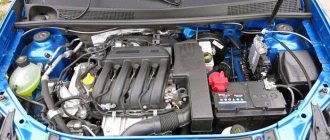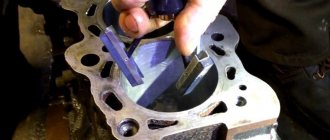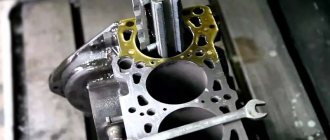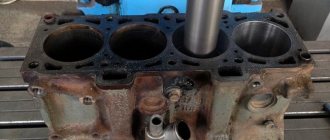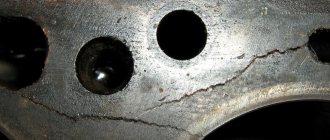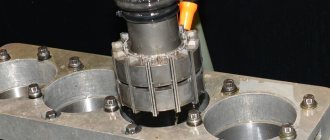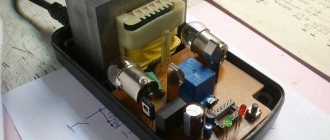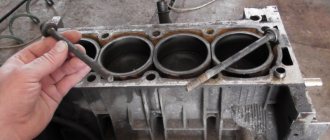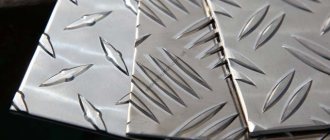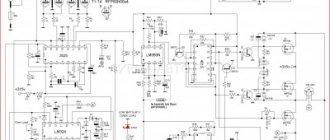How is the cylinder block lined? - today we will try to understand what is better than sleeves or coatings made of Nikasil and Alusil.
The debate continues about whether an aluminum block or a cast iron one is better. Progress is an unchanging thing in our world, so heavy cast-iron engines have been replaced by new light and aluminum ones. Manufacturers claim that aluminum blocks are superior to cast iron in all areas: they are lighter, not subject to corrosion, and thermal conductivity is 4 times higher than that of a cast iron block. Is everything so good?
Cast iron block
Most automakers follow the path of least resistance and try to reduce the weight of the cars they produce every year. And the replacement of the cast-iron engine, by the way, is three times heavier than the aluminum one, did not take long.
The cast iron block is a very durable element and has a low coefficient of friction between the cylinder walls and the piston surface. Maintainability is the middle name of a cast iron block. The cylinder walls are restored by boring and installing repair size pistons
The eternal debate - cast iron or aluminum? Which engine is better?
Many of you don’t even know what the cylinder block of your car is made of, and even more don’t know what a cylinder block is. There is nothing shameful here; this information, as a rule, is not advertised by the manufacturer, such as the number of airbags or a set of options that increase the level of comfort in the car.
Information about the cylinder block is known only to those who are interested in it, and this happens in two cases: either you are looking for a new car, or you have problems with the engine. There is a third option - you have problems with the engine, and you are looking for a car
“Dry” sleeve from the manufacturer
Engines Gamma 1.4 l. and 1.6 liters, installed on Hyundai Solaris and Kia Rio, are manufactured using the “dry” liner method - a cast iron sleeve with uneven outer edges is filled with liquid aluminum. A “dry” liner causes difficulties when repairing a block, unlike a “wet” liner where it is possible to remove the liner and replace liners and pistons.
Cylinder working surfaces coated with titanium nitride
A relatively new method, not yet used in mass production, is coating the working surfaces of the cylinders with titanium nitride (TiN) or titanium aluminum nitride (TiAIN). To achieve the required wear resistance, the honed aluminum cylinder running surfaces are coated with the PVD method (“Physical Vapor Deposition”: physical separation of the gaseous phase). The thickness of the coating is relatively small, so that the honing structure remains during the coating. Relatively high costs and insufficient reliability of the process, however, stand in the way of widespread use of this method.
When using the PVD method, the donor material existing in solid form is evaporated in a vacuum. This occurs either by ion bombardment or in the form of an electric arc. Image 5 schematically shows how ionized argon gas ions knock out tiny particles from the donor material. Vaporized or dislodged metal particles move in ballistic orbits through the vacuum chamber or are deposited on the surfaces being coated. The duration of the coating process determines the required coating thickness. If reacting gases such as oxygen, nitrogen, or hydrocarbons are introduced into the PVD chamber, oxides, nitrides or carbides can also be separated.
| Image 5 |
Nikasil and Alusil
Thin-walled coatings (nickasil or alusil coatings) in theory, this method had only positive aspects, but in practice everything turned out to be much worse. Official version .
Most likely, the Nikasil coating technology turned out to be expensive and labor-intensive, with a high percentage of defects, which were attributed to high-sulfur gasoline. The second theory states that Nikasil and Alusil are a strong but thin coating located on the aluminum alloy of the block and at high temperatures are simply pressed into the aluminum.
The advantage of aluminum motors
Coated motors can withstand high loads when using good oil and gasoline. Such motors are not subject to the effect of uneven thermal expansion and can operate at high speeds for a long time.
In the 2000s, the active introduction of this scheme into mass production began. The liners were no longer placed in the cylinders, but their role was played by laser or plasma spraying based on silicon (Alusil technology). Such technologies theoretically increased the resource of the power unit by a third.
Timing chain or belt? Which car engines are the most reliable Read more
Aluminum engines have higher thermal conductivity than cast iron, which means they heat and cool better. They weigh less and are easier to process, but, most importantly, they allow you to work at peak performance for a relatively long time, spinning the engine to the “red zone”. Aluminum engines M112, M113, M272, M273 with Alusil were installed, for example, in Mercedes-Benz. The BMW brand used the same technology in the M52, M60, M62, M70, M73, etc. engines, and Audi makes 2.4 V6, 3.2 FSI V6, 4.2 FSI V8, 5.2 FSI V10 engines.
In ideal conditions and with good gasoline, spray-coated engines could travel 500 thousand km or more. But Russia has far from ideal operating conditions. Soon, shortcomings began to emerge that cast doubt on the declared reliability.
Nuances of the technological process
When you start to describe the process, it always seems at first that there is nothing really to describe. They bored the block to the outer size of the liner, pressed the liner in, and that was almost all. It would seem nothing complicated. However, no.
- Depending on the specific block and combination of materials, pressing can be performed using different technical processes. For cast iron blocks, the most common method is to press the liner into place using a press, sometimes with additional heating of the cylinder block. If an aluminum block is sleeved, it is almost always heated.
- After installing the liners in the cylinders, the liners usually protrude somewhat above the plane where the cylinder block meets the head. The plane of the cylinder block is then machined or ground to ensure a smooth surface.
- In most cases, after installation into the cylinder, liners require grooving (to a thickness of about 0.1 mm), as well as honing. In principle, there are no difficulties in making a sleeve immediately ready for use, however, during installation, the sleeve may be slightly deformed, and a groove can guarantee the elimination of potential misalignment and other geometry violations.
However, in some cases there are liners that are supplied immediately honed and do not require additional actions after installation in the cylinder.
If we talk about “wet” sleeves, they are always supplied “ready to use” and do not require additional actions after installation.
- “Dry” cartridges are usually pressed with an interference fit of 0.03-0.04 mm. In principle, it is possible to install the sleeve without tension at all - the sleeve will be fixed by the stop from moving downwards and by the block head from moving upwards. However, there is no guarantee that over time, deformation from cyclic heating and cooling will not lead to the sleeve starting to move freely in the vertical direction. In this case, the engine will “ask” for repairs a little earlier.
Some “insurance” against such a situation is the order of technological operations. If the sleeve does not “sit” tightly enough, then during honing it will “lift” and it will begin to protrude relative to the plane of mating with the head. If the passage along the plane is carried out after honing, there is a risk that the protruding part of the liner will simply be ground off, and the fact that the fit is not tight enough will go unnoticed.
Reliability of the 1.2 TDI engine
What can you say about the reliability of the 1.2 TDI engine? This engine inherited all the pros and cons of 4-cylinder engines with pump injectors. Essentially, this is a smaller and lighter 1.9 TDI engine with its own characteristics. Therefore, this small motor suffers from the same shortcomings. However, repairing this engine is not easy: if you have to remove the cylinder head, it is not a fact that the cylinder block will survive it. When the cylinder head screws are loosened, the main bearing caps are weakened, which can lead to deformation of the crankshaft bed. This is the information from the manufacturer.
Destruction of the braid on the electrical wiring of the injectors
The smallest turbodiesel with pump injectors can also present an unpleasant surprise in the form of one of the pump injectors turning off. Subsequently, the engine will operate with one cylinder disabled. The reason is standard: destruction of the braid on the electrical wiring, errors are recorded indicating a failure in the electrical circuit of one of the pump injectors. To eliminate this problem, you need to change part of the electrical wiring under the valve cover. It may also help to tighten the pins in the terminal of a specific injector.
Tandem pump
On engines with pump injectors, a so-called tandem pump is used. It consists of two sections. One section, the outer one, pumps fuel into the fuel rail. The inner section contains a vacuum pump.
This double unit often leaks fuel and the smell of diesel fuel appears in the cabin.
At the same time, diesel fuel can leak into the vacuum section and mix there with the oil that is supplied for lubrication. The opposite situation is also possible, when oil enters the pumping section.
The problem of the tandem pump leaking is solved by replacing its seals, which are supplied in repair kits. The repair kit also contains springs that need to be installed under the booster pump blades. The wear of these springs is indicated by poor and long engine starting, caused by a slow increase in fuel supply pressure. Normally, the booster pump should produce 7 bar.
Not all tandem pump problems can be solved with a repair kit. In its vacuum section there is a fitting that was unsuccessfully rolled on the conveyor. Often it becomes loose, and then the performance of the vacuum pump decreases, even the brakes become weaker. Air leaks into the vacuum section can be easily repaired by cold welding.
Turbocharger
A Garrett GT1541V variable geometry turbocharger is responsible for pumping air into the 1.2 TDI PD engine. This version is known for cracking the cast iron turbine housing. Because of this problem, exhaust gases leak into the engine compartment and can be sucked into the cabin through the ventilation system. The welding of the crack most often does not last long, and ultimately the turbocharger assembly has to be replaced.
Wear on the shaft and bearings of this turbocharger rarely occurs, especially if the owner uses the correct and high-quality oil.
Oil level sensor
The 1.2 TDI PD engine uses an oil level sensor that is not very durable. If it malfunctions, the ECU notifies you of a low oil level in the sump. In most cases, this alert is caused by a sensor malfunction. It needs to be replaced with a new one, although the method for repairing it is already known. You need to carefully heat and remove the plastic tube of the meter. After this, you will have access to soldering the contacts. You just need to re-solder the contacts and then assemble the sensor. As a rule, such repairs allow you to restore the oil level sensor.
Resource of pump injectors
Pump injectors have a good service life, and they can be diagnosed without removing them from the engine based on the actual parameters of their operation. All parameters of their operation are clearly visible in the diagnostic software, so a good diagnostician can determine the degree of wear and even find signs of the presence of air in the fuel system.
If the pump injector nozzle is worn out, it can be repaired, but if there are signs of improper operation of the control valve or wear on its seat, then the pump injector will have to be replaced.
Camshaft wear
Engines with pump injectors are prone to wear on the camshaft cams. This problem occurs quite rarely on a 1.2-liter diesel engine. Let us remind you that to protect such an engine from camshaft wear, it is necessary to use oil with VW 505.01 approval (viscosity 5W-30) and change it every 10,000 km.
Injector seals
Much more often, pump injectors require attention to replace the rubber sealing rings that separate the fuel supply and return circuits. It has been noticed that if the seals of the rings are broken, air can get into the fuel lines. In this case, the diesel engine will operate extremely unstable and uneven. When diagnosing pump injectors on a stand, most likely no deviations will be found. Also, their nests in the cylinder head will be fine. The problem of poor engine performance will be eliminated by replacing the pump injector seals.
